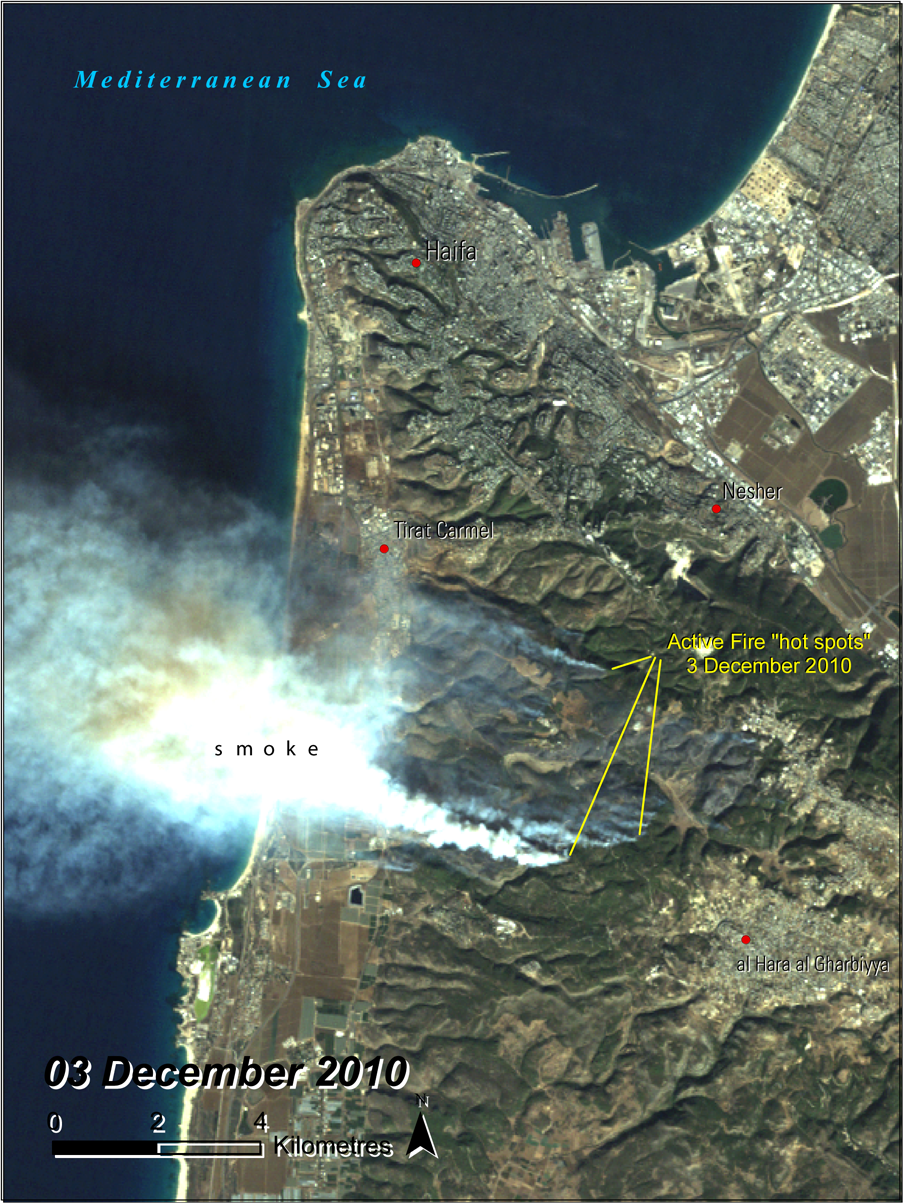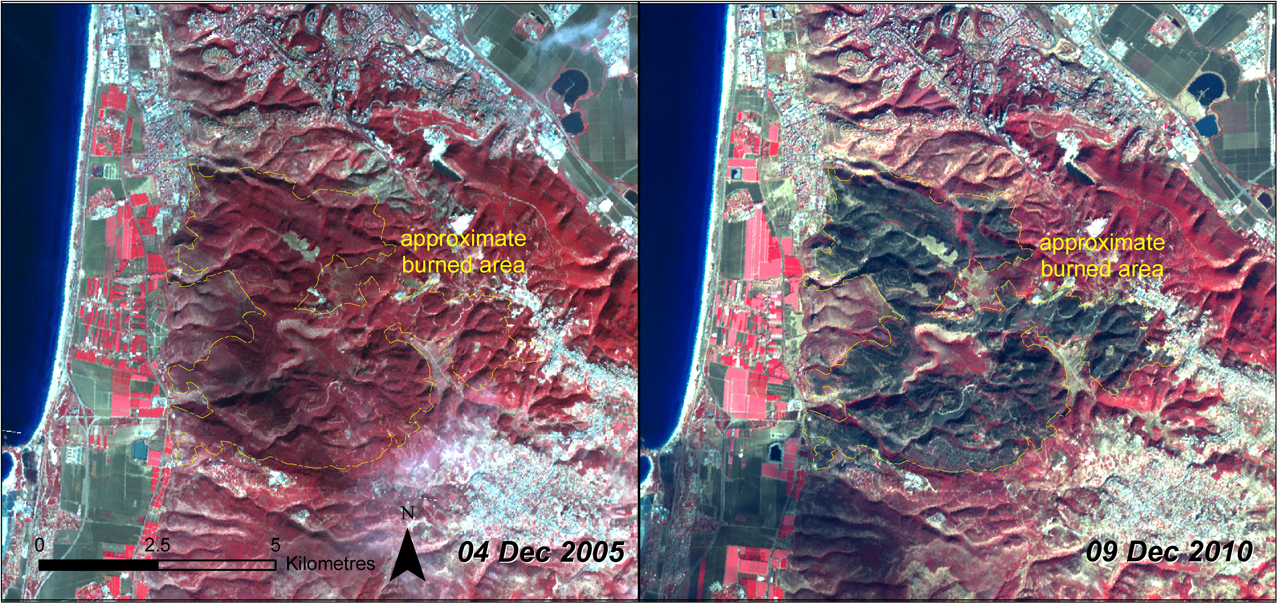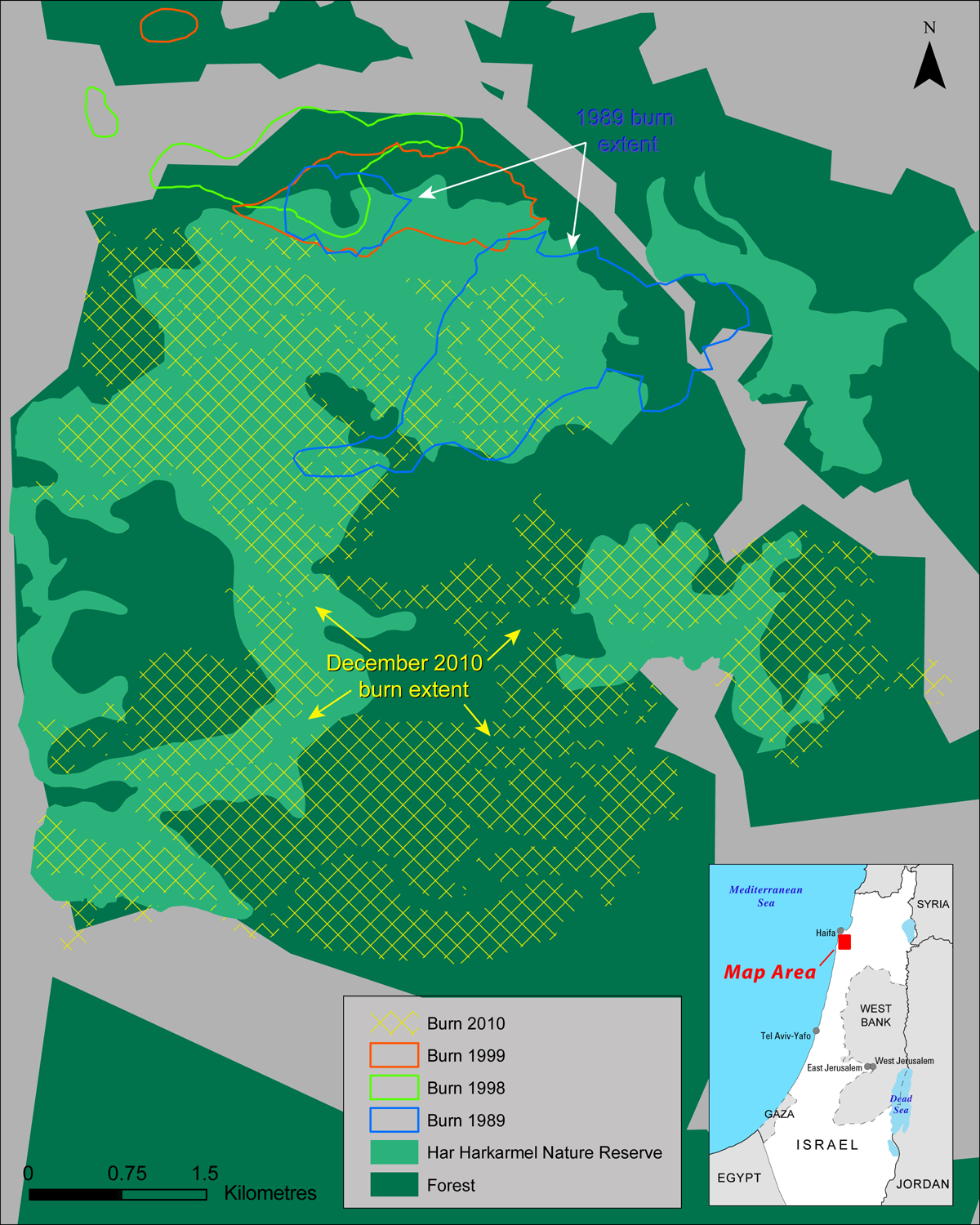|
Having trouble reading this email? Download the PDF.

Thematic Focus: Disasters and Conflicts, Environmental Governance, and Climate Change
Largest Fire in Israel's History Consistent with Climate Change Predictions
Why is this issue important?
A wildfire in early December, described as the largest in Israel's history, burned nearly 2000 ha of pine and oak forest surrounding Mt. Carmel. The fire is
consistent with predictions made by Israel’s ministry of environment in a report released over a decade ago, and reiterated in a follow-up report released in November 2010.
The reports predicted that climate change would lead to "increased dry conditions and a lengthening of the dry season which will increase risks of forest fires" (IME 2010).
In fact, Israel had been suffering from a drought over the past several years leading up to the fire (JPost.com 2010).

The fire was centred in a portion of Har Hakarmel Nature Reserve located on a ridge rising to the south of Haifa. Several previous large fires (80 to 500 ha) had burned in
this area between Haifa and the nature reserve over the past 27 years (Wittenberg 2007). The December fire, however, burned roughly five times the area of the second-largest
fire over that same period (~500 ha in 1989) (Wittenberg 2007). December's fire consumed roughly 1.4 per cent of Israel's total forested area of 132 000 ha.

These ASTER satellite images from before and after the fire show the extent of the burned area. Red corresponds to healthy vegetation, silvery gray areas are urban areas;
agriculture, along the left side, shows as patches of red and gray with straight-line edges, while the Mediterranean Sea is the deep blue area in the upper left. The
burned area (outlined in yellow) changes from a deep red indicating healthy forest in the 2005 image to black showing burned areas in the 2010 image.

Findings and Implications
Fire is a common event in Mediterranean ecosystems and forest regeneration should occur naturally thus fire itself is not an ecological disaster (Ne'eman 1997;
Wittenberg and others 2007). Changes in fire frequency or severity under climate change scenarios would change this ecosystem and would likely change the nature and
species mix of the forest as well (Pausas 1999). The single occurrence of a fire such as this is not in itself evidence of climate change. However, this fire and the
fires in Russia in the summer of 2010, which burned ten times this area, add to the growing body of evidence that climate change is already occurring.
Both fires were preceded by drought and higher than normal temperatures (UFZ 2010, CSMonitor 2010) and are consistent with the types of events expected under climate change scenarios.
|
References
CSMonitor. (9 August 2010). Russian fires prompt Kremlin to abruptly embrace climate change. Accessed online on December 16, 2010 at
http://www.csmonitor.com/layout/set/print/content/view/print/318660
IME. (2010). Israel’s Second National Communication on Climate Change – submitted under the United Nations Framework Convention on Climate Change. Ed. Moshe Yanai Axelrod.
Israel Ministry of Environmental Protection 2010, Jerusalem.
JPost.com (19 July 2010). Drought-plagued Israel ready as global heat soars. Accessed online on January 5, 2011 at
http://www.jpost.com/Israel/Article.aspx?id=181844
Ne'eman, G. (1997). Regeneration of Natural Pine Forest - Review of Work Done After the 1989 Fire in Mount Carmel, Israel. International Journal of Wildland Fire 7(4):295-306.
Pausas, J. (1999). Response of plant functional types to changes in the fire regime in Mediterranean ecosystems: A simulation approach. Journal of Vegetation Science 10:717-722.
UFZ. (2010). Hemholtz Centre for Environmental Research, Press release: Scientists: The fire in Israel is a typical example of climate change effects in the
Mediterranean. Accessed online on December 16, 2010 at http://www.ufz.de/index.php?en=20837
Wittenberg, L., Malkinson, D., Beeri, O., Halutzy, A., Tesler, N. (2007). Spatial and temporal patterns of vegetation recovery following
sequences of forest fires in a Mediterranean landscape,
Mt. Carmel Israel. Catena 71:76-83
|
|








